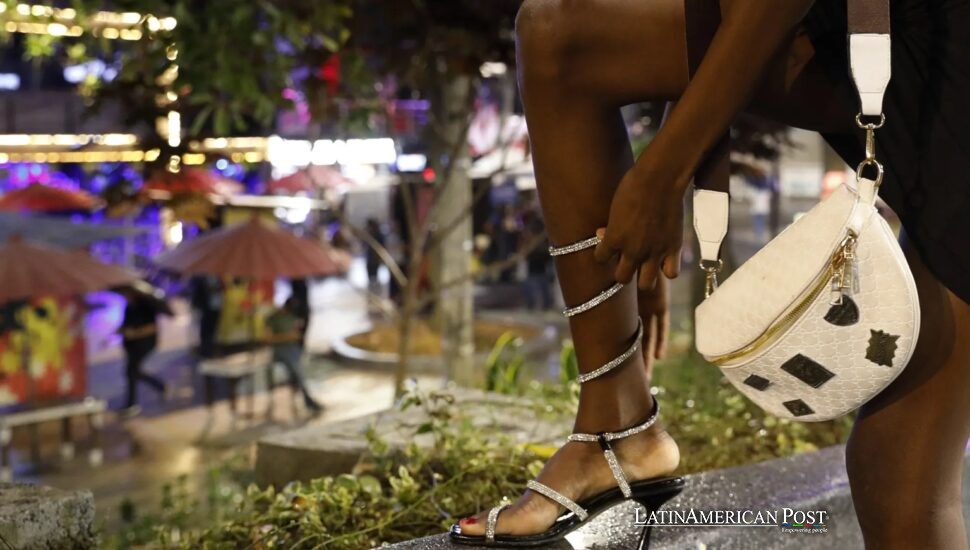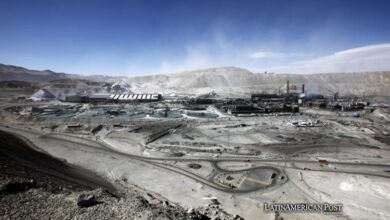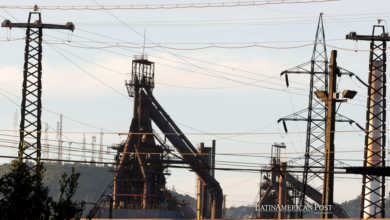Work, Camera, Control: The Bright and Dark Sides of Webcam Modeling in Colombia

In Colombia, an emerging hotspot for webcam modeling, an investigation reveals how a sector that promises economic independence for thousands of women and transgender people faces unsustainable working conditions, sexual exploitation, and ties to global digital networks.
A Quietly Booming Industry
Colombia has positioned itself as one of the global leaders in the webcam modeling industry, a form of digital sex work that has grown rapidly over the last decade. This boom is driven by a mix of factors: economic crises, youth unemployment, gender inequality, and increasingly accessible digital platforms. In cities like Bogotá, Medellín, Cali, and Palmira, dedicated webcam studios are popping up in residential buildings, shopping centers, and converted homes, often operating without institutional oversight.
What began as an informal labor alternative has evolved into a multimillion-dollar industry employing thousands of people. For many young women, single mothers, and transgender individuals who face discrimination in the formal job market, webcam modeling represents one of the few viable options to achieve financial independence. Studios offer, in theory, a safe space, technology, training, and technical support to connect with clients from around the world.
However, behind the façade of digital entrepreneurship lies a reality marked by systemic abuse, labor exploitation, and a lack of basic guarantees. While the earnings generated by the models are high in global terms, the distribution of these profits is deeply unequal, and the working conditions often violate fundamental human rights.
Exploitation Behind the Camera
Many people working in webcam studios report conditions that would be considered intolerable in other sectors. Shifts of 12 to 18 hours are common, with no formal contracts or access to social security. These long hours are often accompanied by unhygienic environments, poor ventilation, pest infestations, and shared spaces that fail to guarantee privacy or physical and emotional safety.
In numerous cases, studio managers impose connection targets and pressure models into performing specific sexual acts on camera. If they refuse, they risk penalties such as withheld pay, isolation, or even being expelled from the workplace. Some studios have reportedly used hidden cameras to monitor models without their consent—an invasive form of control that undermines their autonomy and exposes their privacy.
The economic model behind these studios is designed to maximize profits for the owners while minimizing what models receive. Streaming platforms keep a large portion of earnings, and studios take additional cuts while charging fees for internet use, workspace, makeup, cleaning, and basic tools. In the end, models may receive less than 15% of what they generate.
Technological Dependency and Isolation
One of the more subtle forms of control is the studios’ exclusive management of streaming accounts. When a model begins working, a profile is created on the platform, which is administered directly by the studio. This means that the entire history, follower base, statistics, and income records are controlled by a third party.
This mechanism prevents models from migrating to other platforms or launching independent careers without losing their entire digital identity and client base. As a result, many feel trapped in abusive work environments, fearing that leaving would force them to start over from scratch with no income or visibility.
Isolation also plays a key role in perpetuating these dynamics. Despite working in shared environments, most models lack strong support networks, knowledge of their labor rights, or mechanisms to report abuse. Fear of being stigmatized by their families or communities often leads them to remain silent about the injustices they face daily.

EFE@Carlos Ortega
Resistance, Agency, and Paths Toward Reform
Despite the grim outlook, many models have found personal empowerment through webcam work. Some have paid off debts, supported their children, finished school, bought homes, or even started their own studios under more equitable working conditions. In these cases, the key lies in their control over their image, schedules, and the terms of their labor.
Community organizations and sex worker collectives have begun mobilizing to bring these issues to light and demand structural change. Their position is clear: webcam modeling is a form of digital sex work and should be recognized and regulated—not criminalized. This means crafting labor laws tailored to digital realities, establishing minimum standards for safety and hygiene, and creating effective, accessible complaint mechanisms.
There is also increasing pressure on international platforms to take active responsibility for the well-being of their performers. This includes transparency in revenue sharing, allowing models to control their own accounts, and blocking studios that are reported for abuse. Technology should not be an excuse to obscure exploitation or avoid basic corporate responsibility.
Institutional Response and Legal Gaps
Although some courts have begun to recognize certain rights for webcam workers, a large legal void remains in practice. Labor inspections cannot keep up with the hundreds of informal studios operating without licenses, and there are no clear protocols for addressing reports of digital sexual exploitation. The sector’s informality means that many models do not have access to health insurance, pensions, or adequate medical care.
Furthermore, strong social stigma surrounds sex work—even in its digital form—making it harder for victims of abuse to seek help from authorities. Many fear that their cases will not be taken seriously or, worse, that they will be re-victimized through prejudice and moral judgment. This climate of institutional distrust favors impunity and allows cycles of violence to continue unchecked.
There is an urgent need for specific regulation that guarantees rights without imposing arbitrary restrictions. The state must play an active role, not only as a regulator but also as a defender of human rights. At the same time, public education efforts are needed to build understanding and empathy—beyond prejudice—for people who are, above all, workers deserving of dignity, protection, and freedom.
Between Opportunity and Exploitation
Webcam modeling in Colombia represents one of the most complex faces of today’s digital economy. On one hand, it offers a way out of poverty, unemployment, and discrimination. On the other, it can become a trap of exploitation masked by the glow of a screen.
Also Read: Latin Migrants Weather Independence Festivities Hiding from Freedom’s Fireworks
In that ambiguous space between autonomy and abuse, thousands of women and transgender people move each day, setting their own limits, re-signifying their bodies and labor, and searching for a balance they have yet to find in the current institutional framework. The future of the industry will depend on how society chooses to address this contradiction: whether it chooses to regulate and protect, or to continue invisibilizing and allowing precariousness under the guise of digital entrepreneurship.




